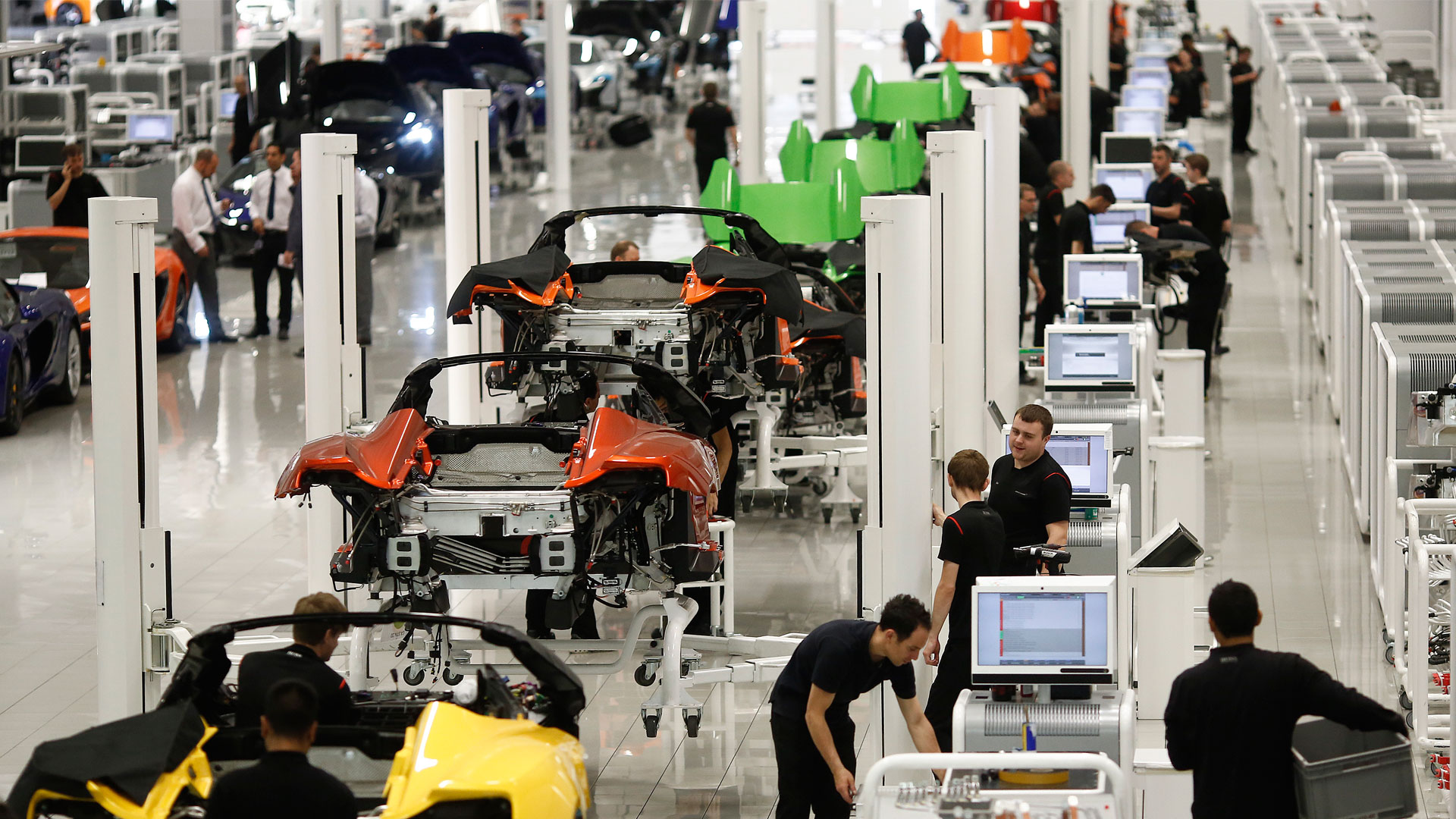

Compared to most supercar builders—and that includes a decades-long list of obscurities, stillborn concepts and sputtering failures—McLaren enjoyed a distinct advantage: A global racing reputation that extends from Formula One championships to the Can-Am cars of its late Kiwi founder, Bruce McLaren.
Yet McLaren’s successful segue, from crafting a handful of precious racers to building, selling, and servicing thousands of street cars, was by no means assured. So, as the 10,000th production McLaren rolls out of its breathtaking factory, and the company marks a third consecutive year of profitability, fans and enthusiasts can breathe easier; McLaren has officially gained a foothold in the weird, wonderful business of exotic automobiles.
Fittingly, the car that marked today’s occasion at the McLaren Production Center (MPC) was a 570S, part of the company’s new and newly affordable Sports Series. Like many automakers before it, McLaren is digging sales gold from entry-level models—though, in this rarefied air, entry-level means $191,100. That’s the base ticket for a 570S, or $201,450 for the more luggage-friendly 570GT version.
Priced at £126,000 in the United Kingdom (roughly $156,000), the 540C is even more affordable, a detuned, 533-hp version of the 570S that’s not offered here in the States.
Despite their relative attainability, McLaren’s Sports Series models don’t cheat or cheap out on the company ethos. All three are built on a carbon-fiber monocoque, with exotic, swing-up dihedral doors, a mid-mounted, twin-turbo 3.8-liter V8, and top speeds of at least 199 mph.
Robust sales of Sports Series models have spurred the company to add a second shift at the MPC. A giant like Toyota or Chevrolet would chuckle and pat McLaren’s head like a wee British orphan, but the move has doubled production capacity from 10 cars a day to 20.
Mike Flewitt, McLaren Automotive chief executive officer, called the production of the 10,000th McLaren a significant milestone in the short history of the company, whose initial model, the 12C, went on sale in 2011.
“The fact that it took us 42 months to build our 5,000th car and just 22 months to build the next 5,000 speaks volumes about the pace of development of the company,” Flewitt said.
Prior to McLaren Automotive’s founding as a standalone company, in 2010, with the racing division spun off, McLaren had produced merely 106 copies of a single street car: the famed F1 of the early Nineties. It also collaborated with Mercedes-Benz to build the SLR McLaren.
Riding its newfound momentum, McLaren is on pace to nearly double its worldwide sales, from 1,654 last year to more than 3,000 in 2016. More than 90 percent of those cars are being exported beyond the U.K. That’s within sight of Lamborghini—which itself sold a record 3,245 cars in 2015—but still less than half the volume of Ferrari, which found 7,664 global buyers last year, and plans to ramp up production to roughly 9,000 cars by 2019.
McLaren itself is aiming to boost current production by nearly 50 percent by 2020, to more than 4,500 cars. Its “Track22” business plan calls for investing $1.4 billion, including funds to develop 15 all-new models or derivatives by 2022; at least half those models will feature hybrid powertrains by the end of that six-year plan. The company is also prototyping an all-electric powertrain for possible use in an Ultimate Series car, a successor to the 903-horsepower P1, of which McLaren built just 375 units
That’s the kind of machine that can compete with Sweden’s Koenigsegg, France’s Bugatti, or Pagani from Italy. But while those makers battle McLaren over prosciutto-thin slices of the hypercar market, McLaren is smartly positioned to play a bigger, longer game: stealing sales from Porsche or Mercedes in the roughly $150,000-$200,000 range, and going head-to-head with Ferrari, Lamborghini, Aston Martin, and the rest at $250,000 and up. If these tech-savvy Brits pull it off, McLaren would double annual revenue to roughly $1.1 billion by 2022. That’s still drop in the bucket compared with, say, Toyota’s $253 billion net revenue. But by supercar standards, it’s a drop that could sustain fast life at McLaren for decades to come. Enthusiasts would surely raise a pint to that.